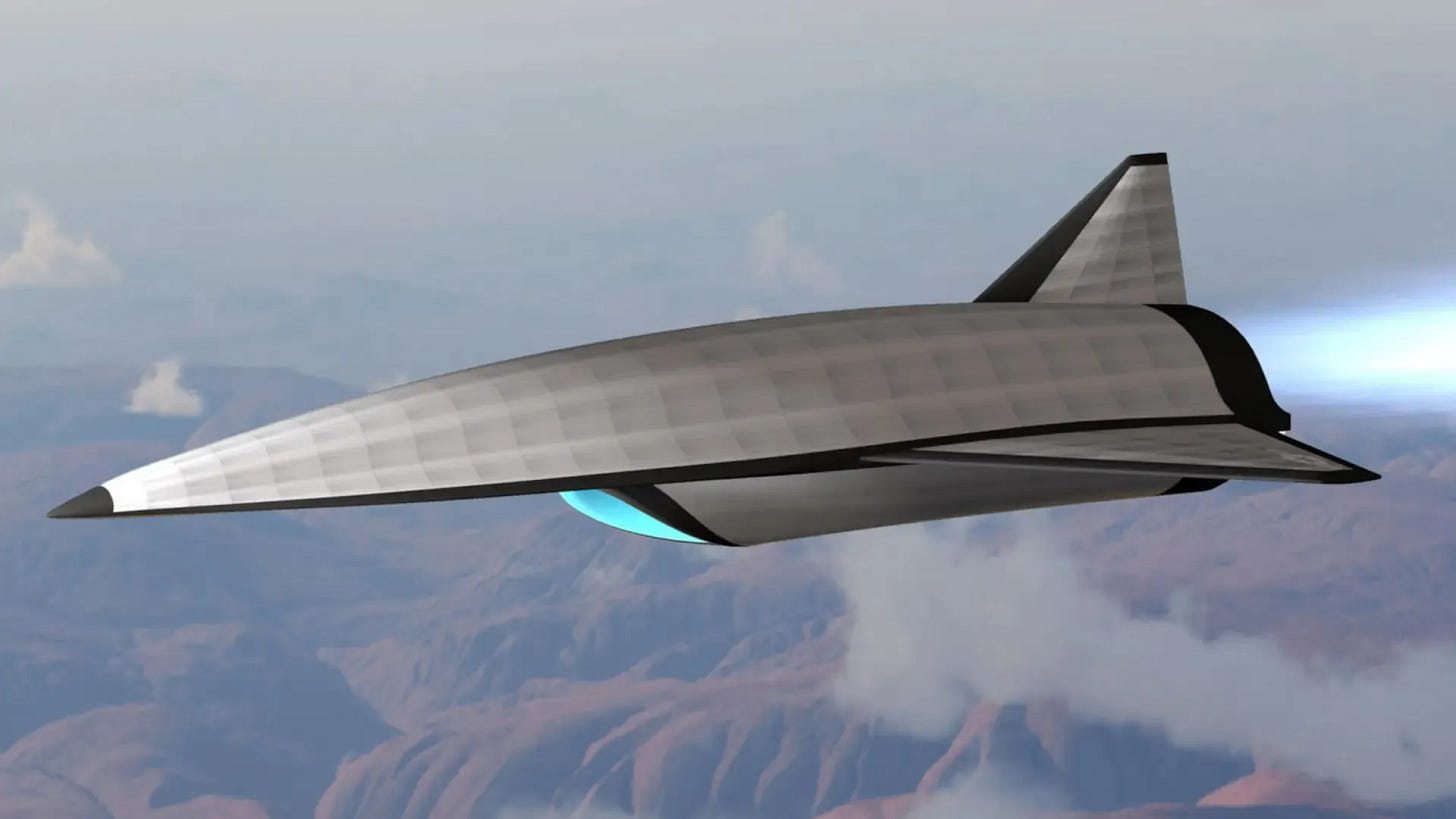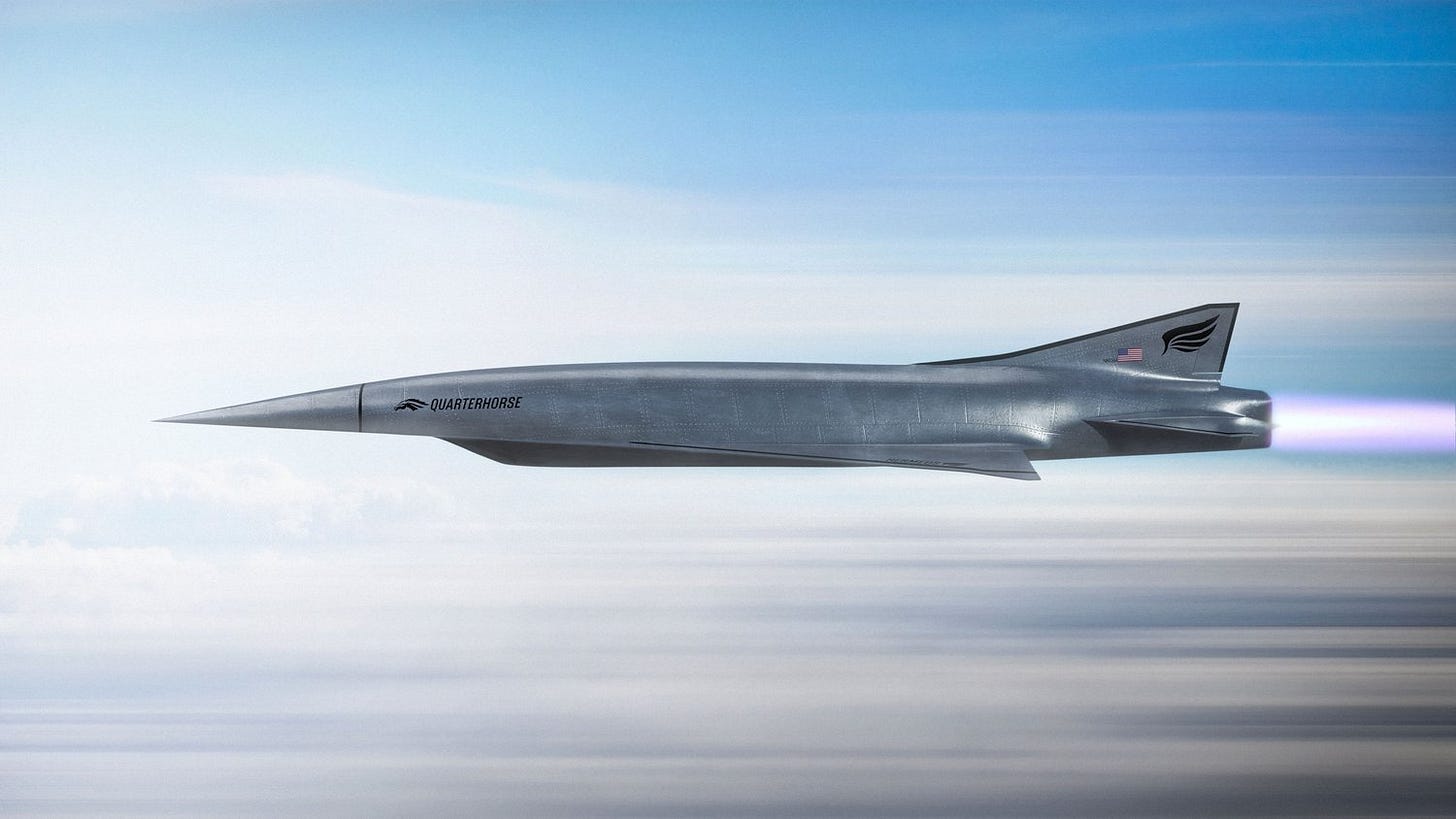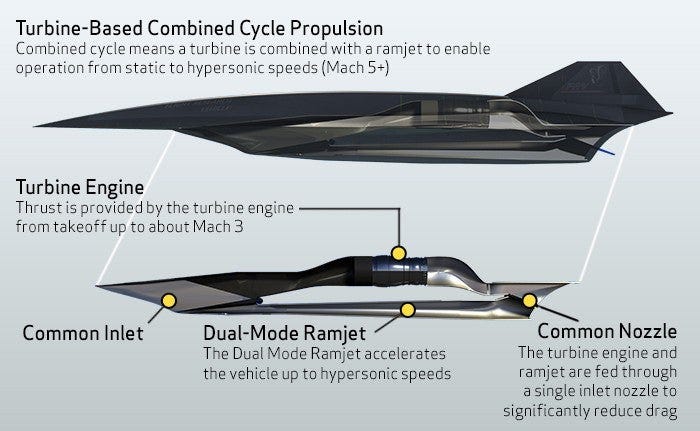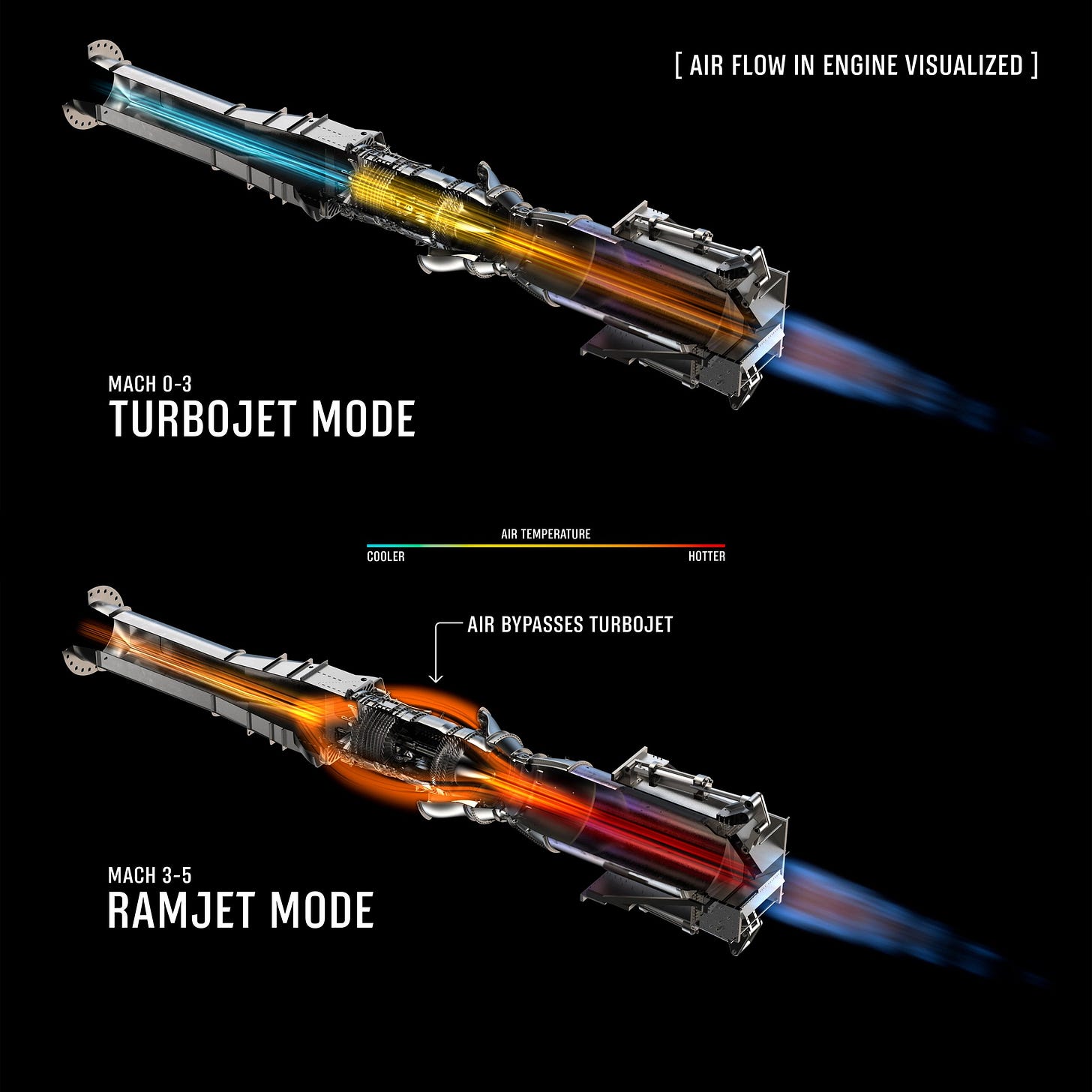Next Generation Responsive Strike (NextRS), a Hypersonic Bomber for the U.S.
On February 13, 2025, DARPA's secretive Aerospace Projects Office (APO) announced the Next Generation Responsive Strike (NextRS) program, aiming to develop a large hypersonic bomber prototype.
The Engineer's Perspective is a reader-supported publication. Sign and up and subscribe to see more in-depth Aerospace/Aeronautical Analysis!
I. Introduction
An unexpected announcement, DARPA's secretive Aerospace Projects Office (APO) unveiled plans for a hypersonic bomber prototype, promising to redefine and expand the boundaries of military aviation. Called Next Generation Responsive Strike (NextRS), the project aims to develop a a strike aircraft capable of sustained flight at speeds exceeding Mach 5. The NextRS hypersonic bomber project aims to create a reusable, large-scale platform capable of multi-mission strike and intelligence, surveillance, and reconnaissance (ISR) operations
Per 1945:
“The Aerospace Projects Office (APO), working in close partnership with Air Force Research Laboratory (AFRL) and the National Aeronautics and Space Administration (NASA), develops and demonstrates technologies which enable Next Generation Responsive Strike (Next RS) air platforms,” their announcement said.
“APO envisions reusable hypersonic aircraft attributes providing future multi-mission strike/ISR capabilities against targets protected by advanced air defense systems. APO is seeking innovative technologies that close the gap between the state-of-the-art in reusable hypersonics and the level of technical maturity required to initiate a NextRS Y-Plane design and development program later this decade.”
This initiative builds upon DARPA's extensive work on cutting-edge aerospace technologies, including the Next Generation Air Dominance (NGAD) program and recent breakthroughs in hypersonic weapon development. The announcement follows the successful completion of the Hypersonic Air-breathing Weapon Concept (HAWC) program, which demonstrated the viability of air-breathing hypersonic missile technology. The hypersonic bomber project, should it be successful, potentially offers unprecedented speed and global reach, not exhibited since the days of the SR-71.
II. Background on DARPA's Hypersonic Bomber Program
DARPA's Next Generation Responsive Strike (NextRS) program aims to develop a revolutionary hypersonic bomber with the following expanded project goals:
Development of a Large-Scale Hypersonic Bomber Prototype
Enhance Military Operational Effectiveness
Push Aerospace Engineering Boundaries
Maintain U.S. Technological Superiority
Development of a Large-Scale Hypersonic Bomber Prototype
The NextRS program goal is to create a reusable aircraft capable of sustained flight at speeds exceeding Mach 5, which is over 3,800 mph, and will likely utilize a turbine-based combined cycle (TBCC) propulsion system. This type of engine would allow the aircraft to take off like a conventional jet and then transition to hypersonic speeds by means of a supersonic combustible ramjet (SCRAMjet). The aircraft is designed to achieve seamless transition from traditional turbine engines to hypersonic speeds. DARPA plans to design the aircraft as a "Y-plane" concept, which could potentially lead to engineering and manufacturing development (EMD) in the future.
Key to this technology will be the ability to release weapons at hypersonic speeds, as listed in DARPA’s February 5 Contracting notice of:
“[T]echnologies that allow weapons, weapon bays and ejection systems to accommodate hypersonic separation from aircraft and flyout to the target”
Proper design, test, and verification of weapon bays and ejection systems, and of course weapons that can handle the stresses of 3,500+ mile per hour flight will be needed to a hypersonic strike aircraft to succeed.
Enhance Military Operational Effectiveness
Successful development of these technologies would enable NextRS program to achieve rapid, responsive strikes against heavily defended targets. A reusable aircraft that could provide hypersonic multi-mission strike would also enable reconnaissance (ISR) capability not seen since the SR-71’s heyday. The rise of observation satellites may have accelerated the retirement of the SR-71, however, countries have adapted to the predictability of satellite paths, covering and uncovering objects of potential interest as soon as the satellites pass. Having a bespoke, on-the-fly intelligence, surveillance, and reconnaissance (ISR) capability available within hours while providing minimal warning to adversaries could be key to success.
Push Aerospace Engineering Boundaries
As mentioned before, the NextRS program’s success would require the advancement of high-temperature metallic materials and structural concepts. Recent advancements in ultra-high-temperature ceramics (UHTCs) and high-temperature alloys are likely to play a crucial role in achieving these objectives
These advancements would then need to be developed into integrated solutions for managing extreme thermal environments in both the aircraft and propulsion system. The program seeks to develop power generation technologies to support advanced avionics and sensor suites during all flight phases. Additionally, it will need the development of high Mach turbine engine technologies for efficient turbine-based combined cycle (TBCC) operations through mode transitions. These goals would only be the start of the cutting-edge nature of hypersonic technology development needed to address key challenges in materials science, thermal management, power systems, and propulsion.
Maintain U.S. Technological Superiority
The NextRS program reflects the U.S. military's focus on maintaining technological superiority in an era of increasing great power competition. The NextRS program has lofty goals, aiming to bridge the gap between current reusable hypersonic capabilities and a fully operational design by the end of the decade (2030). The development of a hypersonic bomber could provide a significant strategic advantage, enabling rapid global strike capabilities and improved survivability in contested environments.
NextRS, when fully mature, would represent a significant leap in U.S. military aviation technology. By collaborating with the Air Force Research Laboratory (AFRL) and NASA, DARPA seeks to mature the necessary technologies and overcome the extreme engineering challenges associated with hypersonic flight to revolutionize strike missions with unprecedented speed, range, and survivability in modern warfare. The program’s development would effectively counter advancements in hypersonic technology by potential adversaries, particularly China and Russia.
Currently Known Technical Details:
Propulsion System: The bomber is expected to utilize a turbine-based combined cycle (TBCC) propulsion system, similar to the concept proposed for Lockheed Martin's SR-72. This system integrates a traditional turbine engine for low-speed flight with a scramjet for high-speed operations.
Assuming we can take information from the work of Hermeus for the engine, key features for a potential hypersonic strike bomber could include:
Transition from turbojet to ramjet mode around Mach 3, with air bypassing the turbojet entirely at higher speeds.
Materials: Advanced heat-resistant materials and thermal management systems will be crucial for withstanding the extreme temperatures generated at hypersonic speeds. Recent developments include:
Ultra-high-temperature ceramics (UHTCs) with improved durability, such as ceramic carbides that are 12 times more resilient than common UHTCs like zirconium carbide or titanium carbide
Multi-scale structured, porous high-entropy ceramics offering exceptional mechanical load-bearing capability and high thermal insulation performance.
Refractory alloys and composites designed specifically for hypersonic applications
Avionics: Cutting-edge guidance, control systems and technology that enable operations in the unique environment of hypersonic flight, including:
Advanced algorithms for aircraft integration and control during the transition between propulsion modes
Systems capable of withstanding the intense heat and electromagnetic interference generated during hypersonic flight
Sophisticated navigation systems to manage the extreme speeds and potential maneuverability of hypersonic vehicles
Additional technical initiatives DARPA will need to expand on:
Aerodynamics: Developing reusable airframe designs that can withstand extreme heat and pressure while maintaining stability and control at hypersonic speeds.
Thermal management: Creating systems to dissipate the intense heat generated during hypersonic flight, protecting both the airframe and internal components from repeated stress of multiple flights throughout the life of the aircraft.
Fuel systems: Designing fuel storage and delivery systems capable of operating efficiently at extreme temperatures and pressures
Sensors and communications: Developing systems that can function in the plasma sheath that forms around hypersonic vehicles, which can interfere with traditional sensor and communication technologies
Manufacturing techniques: Advancing manufacturing processes to produce complex, heat-resistant components at scale, ensuring the feasibility of mass production
Testing and simulation: Enhancing ground-based testing facilities and computational models to accurately simulate hypersonic flight conditions and reduce development time and costs
Conclusion
The DARPA’s NextRS hypersonic bomber initiative represents a pivotal moment in military aviation technology, with far-reaching implications for global security dynamics and the future of aerospace engineering not seen since the Cold War. The program aims to develop a reusable aircraft capable of sustained Mach 5+ flight, offering unprecedented speed, range, and survivability for strike and ISR missions.
Success hinges on overcoming significant technological hurdles in materials science, thermal management, propulsion, and avionics. Innovations in ultra-high-temperature ceramics, turbine-based combined cycle engines, and advanced control systems are critical. Collaboration between DARPA, AFRL, and NASA is essential to bridge the gap between current capabilities and a fully operational Y-plane design by the end of the decade.
Beyond its military applications, the NextRS program has the potential to revolutionize civilian air travel and space exploration. As the program progresses, its success will not only redefine military capabilities but also shape the geopolitical landscape of the 21st century. The ability to realize the promise of hypersonic flight will depend on continued innovation, strategic partnerships, and a commitment to pushing the boundaries of aerospace technology.
References:
The Engineer's Perspective is a reader-supported publication. To receive new posts and support my work, consider becoming a free or paid subscriber.








